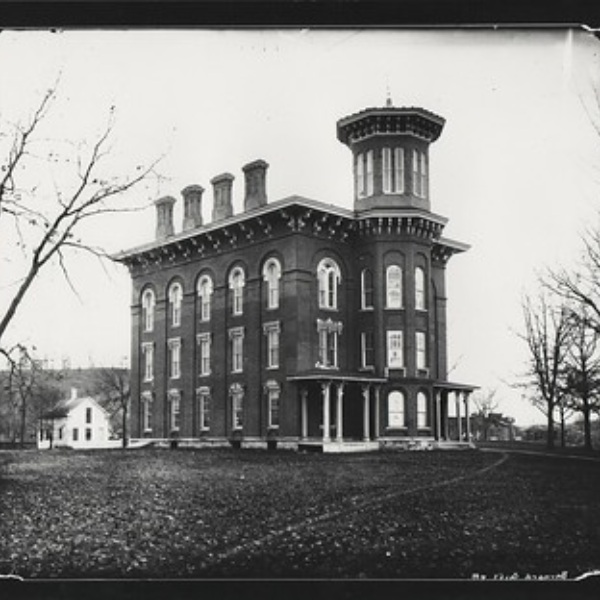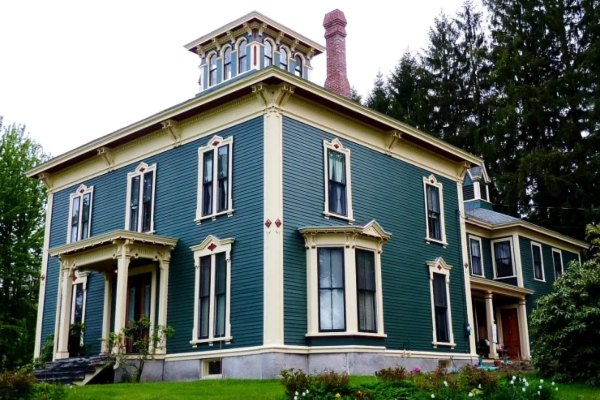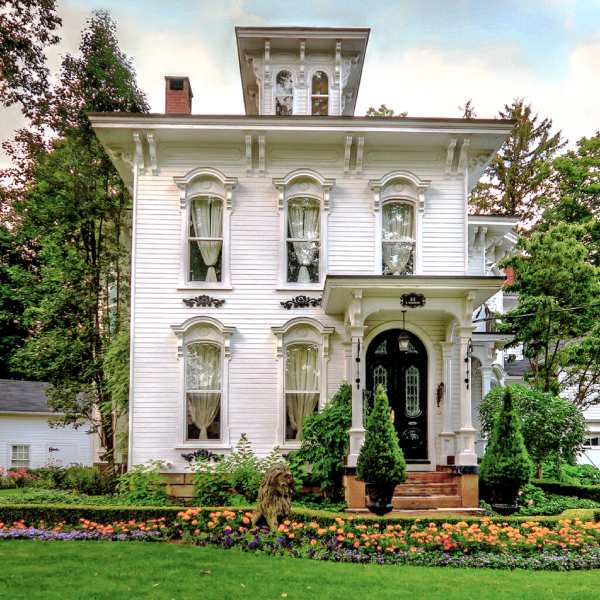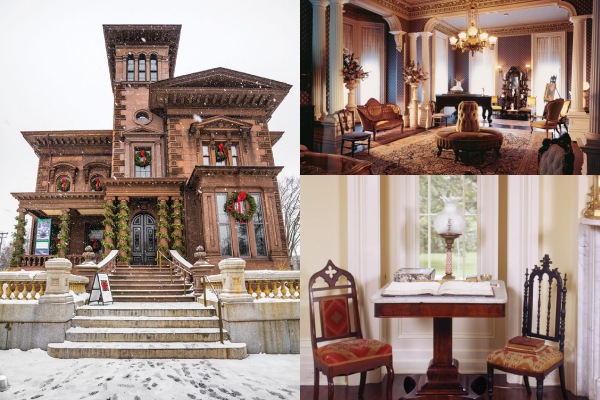Italianate architecture is renowned for its romantic and picturesque aesthetic, inspired by the villas and palaces of Renaissance Italy. It gained popularity in the 19th century, particularly in Britain and the United States.
The design was introduced to break away from the rigid formalism of Neoclassical design, which included Greek and Roman features. Italianate buildings are famous for how they are built, with their uneven shapes, tall windows, and roofs that slope down with wide edges and pretty details. Similarly, they often have fancy fronts with decorations like fancy edges, balconies, and porches, which make them seem special.
Today, let’s explore how Italianate architecture came about, its characteristics, and design elements, and what efforts were made to preserve and conserve such architecture.
Exploring the Origin of Italianate Architecture
British architect John Nash is claimed to have created the first Italianate villa in England, Cronkhill in Shropshire, in 1802. However, the architectural style fully developed in the following decades and became most popular between 1840 and 1885.
During the Victorian times, British people were inspired by the beauty of Florence and the Italian countryside. They were so captivated that when architects and landscape designers visited Italy and saw its stunning palaces and farmhouses, they wanted to bring some of that charm back home. So they began building houses and gardens in Britain that resembled those they had seen in Italy, as living memories of their travels.

Well, Italianate architecture was quite popular across the United States, except in the southern states. However, during the same period when people were becoming more interested in Italianate buildings, the Civil War and Reconstruction caused economic difficulties, resulting in fewer of these buildings being constructed in the southern states.
Furthermore, it became even more popular because books with designs were getting published including Cottage Residences by Andrew Jackson Downing. Italianate buildings made a big impact as they looked fancy and could fit into both cities and countryside places. Even now, its beauty keeps inspiring new buildings and efforts to protect old ones, so people can enjoy them for a long time.
Characteristics of Italianate Architecture
Italianate architecture has special features that remind us of the beauty of Renaissance Italy. Here is a list of design elements that make Italianate architecture special and beautiful, making it a style that people love and keep using.
Asymmetrical Layouts
Italianate buildings often have irregular shapes and different-looking roofs, which makes them more interesting to look at. They are usually made of bricks or wood and are usually between two and four stories tall. The design of Italianate houses makes them look tall and stretched upwards.
Tall and narrow Windows and doors
Italianate buildings often have tall and narrow windows and doors, some with arches or fancy frames, letting lots of natural light inside. These windows and doors are important for making Italianate buildings look tall and stylish.
Whether flat or curved, they’re always decorated with special trims like crowns or frames. Windows can be installed single, double, or even triple. Sometimes, there are bay windows, but not always, and they’re often found on the side of the house.
Low-pitched or Flat Roofs
Italianate structures typically have non-vertical roofs with large sections extending out at the edges and supported by elegant brackets. Meanwhile, the roofs are flat or just a little slanted, with the wide parts sticking out. Similarly, the edges of the roofs and the parts sticking out can be painted in different colors to stand out even more. This style of roof helps keep the sun and rain away and makes the building look more attractive.

Decorative Elements
Italianate buildings usually have front walls made of stucco, brick, or stone. They are often decorated with pillars, cornerstones, and fancy edges called cornices, which make them look more attractive.
Some Italianate homes also have extra features like towers, domes, or galleries above the roof. They are usually square and help people see the garden or surroundings better, which was important in Italianate design.
Outdoor Spaces
Italianate buildings often have balconies, verandas, and porches, giving people more places to enjoy outside. Similarly, there might be a lot of green space called gardens or parks with special features like follies (decorative structures), grottos (small caves or pools), and winding paths that let you enjoy the surroundings of the house.
Ornamental Details
Italianate buildings often have special details like iron railings, fancy carvings, and pretty designs like leaves and flowers that really make Italianate buildings stand out. Similarly, there are extra decorations on them, like cornices (decorative edges), brackets (supports), arches, and cornerstones. These decorations aren’t just painted or drawn on, they stick out from the building, making it look more interesting.
In general, Italian architecture feels very grand, and fancy, and has a charm from the Mediterranean. People love this style because it’s beautiful and classy, and it’s been around for a long time.
Efforts to Preserve and Conserve Italianate Architecture
Italianate structures must be preserved and conserved so that future generations can enjoy them in excellent condition. Since Italianate buildings often hold great architectural and artistic significance, it is crucial to preserve them in order to keep historical and cultural legacy.
This will only be possible if we keep them in good condition and observe certain guidelines, such as routine inspections and repairs for any damage. Lots of different groups can help preserve Italianate buildings, like local communities, building owners, history clubs, and the government.

Sometimes preserving ancient buildings is a challenging task due to the high expense of repairs, the difficulty of locating skilled restorers, and there are rules about what you can and can’t change. However, there are benefits to saving them as well, such as tax returns, grants, or being praised for doing a good job.
Well, if you want to help preserve Italianate buildings, you can raise awareness in your community, lend a hand with repairs as a volunteer, provide funds to organizations that preserve historic structures, or simply speak out in favor of them.
Frequently Asked Questions
1. What is Italianate Architecture?
Italianate architecture is renowned for its romantic and picturesque aesthetic, inspired by the villas and palaces of Renaissance Italy. It gained popularity in the 19th century, particularly in Britain and the United States.
2. What are the key characteristics of Italianate Architecture?
Italianate architecture has special features like asymmetrical layouts, tall windows, and low-pitched roofs with large sections extending out at the edges and supported by elegant brackets. Well, these features really make Italianate Architecture stand out.
3. What are some common preservation efforts for Italianate architecture?
Preservation efforts may include observing certain guidelines, such as routine inspections and repairs for any damage. Similarly, you can raise awareness in your community, lend a hand with repairs as a volunteer, provide funds to organizations that preserve historic structures, or simply speak out in favor of them.
Also read, What is Japandi Interior Design? All You Need To Know
